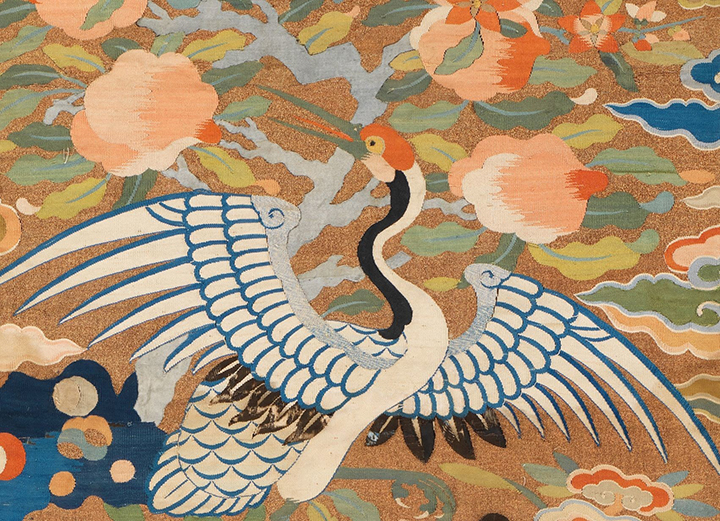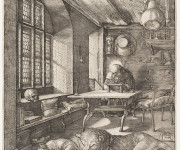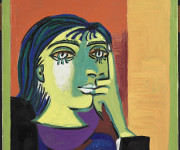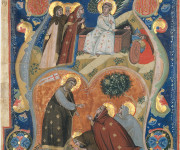The Frist Art Museum presents Weaving Splendor: Treasures of Asian Textiles from The Nelson-Atkins Museum of Art, an exhibition of Chinese, Indian, Japanese, Persian, and Turkish textiles drawn from one of the most significant collections of Asian art in the United States. Organized by The Nelson-Atkins Museum of Art in Kansas City, the exhibition will be on view in the Frist’s Ingram Gallery from October 7 through December 31, 2022.

China (Ming dynasty, 1368–1644). Chair cover with crane design (detail), 17th century. Kesi (silk tapestry) woven with silk and metallic threads; 20 3/8 x 63 3/4 in. The Nelson-Atkins Museum of Art, Gift of Mr. and Mrs. Earl Morse, 59-18/5. Photo – courtesy of Frist Art Museum ©
Made with precious materials, innovative techniques, and stunning artistry, Asian textiles have been integral to global trade for centuries. Whether woven from cotton, linen, silk, or wool, each textile in Weaving Splendor tells a complex and fascinating story that leads guests on a journey along trade routes across continents, and through time, from the 15th century to today.
“This exhibition provides a rare opportunity for our audiences since these extraordinary treasures are not often displayed due to their fragile and light-sensitive nature,” says Frist Art Museum senior curator Trinita Kennedy. “Not only will our guests gain a deeper understanding of the diverse historical textiles on view, but they will also learn about how Asian traditions are being practised and kept alive today, including by artists in our own community through in-gallery demonstrations.”
With more than 65 objects organized thematically into five sections, Weaving Splendor explores the various purposes for which Asian textiles have been created, including for use as garments, furnishings, gifts, and trade goods. Formal court robes made in imperial China and Japan signified rank and status within the governmental hierarchy, while striking costumes from Japanese theatre traditions and Chinese operas brought characters from illusionary worlds to life on stage. Textured velvets and exquisite furniture covers defined and transformed interior spaces. In a recreation of a royal 16th-century Persian tent, exhibition guests can be enveloped by magnificent silk velvet ornamented with flowers and scenes of a royal hunt.
A section devoted to the major role Asian textiles played in diplomatic exchange and global trade features Indian pashmina shawls and chintzes and Persian carpets, including one commissioned as a gift by a shah to a pope around 1600. “Carpets woven in the Islamic world were highly prized in Renaissance Europe. This spectacular example remains in excellent condition, which suggests that it might have been displayed on a wall or table rather than walked upon,” explains Kennedy.
The exhibition concludes with modern and contemporary textiles from China, Japan, India, Pakistan, and Turkey. In some areas, traditions, have been revived by nongovernmental agencies and dedicated patrons and artists, while art forms such as carpet weaving have continued in other regions without interruption. In the 21st century, Asia has regained its position as both a leading textile producer and as a place where local traditions of domestic and luxury textile-making continue to thrive.
In addition to experiential learning activities in the Martin ArtQuest Gallery, Weaving Splendor is complemented by an education gallery with illustrated reference books, a place for guests to reflect and respond, and an area where contemporary fibre artists will talk about and show their processes. A schedule of live demonstrations will be updated at FristArtMuseum.org and will also be available on a touch screen in the gallery.






